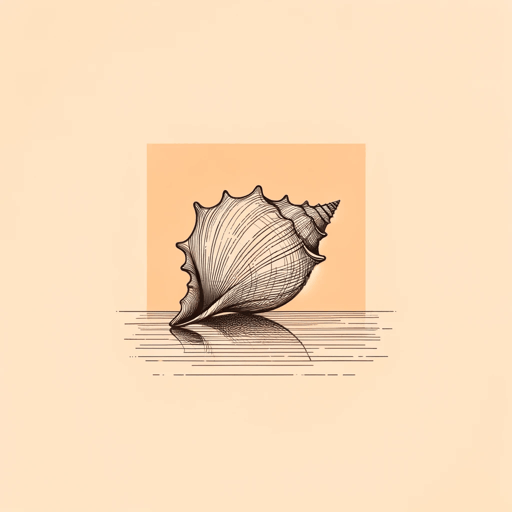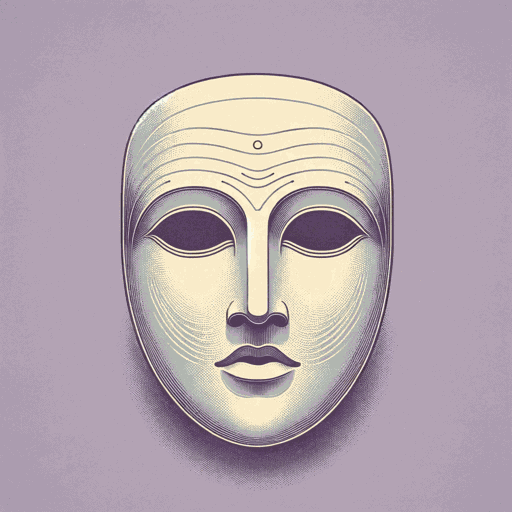30 pages • 1 hour read
Anthony DoerrThe Shell Collector
Fiction | Short Story | Adult | Published in 2002A modern alternative to SparkNotes and CliffsNotes, SuperSummary offers high-quality Study Guides with detailed chapter summaries and analysis of major themes, characters, and more.
Summary and Study Guide
Summary: “The Shell Collector”
“The Shell Collector” (2002), a short story by American author Anthony Doerr, tells the story of an unnamed, blind shell expert living alone with his dog, Tumaini, on an isolated Kenyan island. He receives unwanted international attention after curing a local girl of malaria by exposing her to the bite of a deadly, venomous cone shell.
This guide refers to the edition in the short story collection of the same name, published by Simon & Schuster in 2002.
The story begins as a water taxi arrives on the island’s shore, carrying two New York tabloid journalists—both named Jim—who are writing a story about the shell collector. The shell collector reluctantly allows them into his home and answers their questions truthfully. After they stay the night, the shell collector lets them accompany him on his morning routine of collecting and identifying shells.
The story then flashes back to the shell collector’s childhood. He hunts caribou in Canada with his father until he begins to go blind. His father takes him to an ophthalmologist in Florida, who brings him to the beach. There, the shell collector digs up his first shell, which sparks a lifelong passion. He feels like he can “see” the shell more clearly with his hands than he could have even with his eyes. He learns Braille and begins reading about shells. At 16, he leaves Canada to crew sailboats visiting tropical islands. He learns to identify shells by feel alone and eventually earns a doctorate in malacology, a branch of zoology that deals with mollusks. At 58 years old, after having a son and retiring early from a professorship, the shell collector moves to his current home on a remote island in the Lamu Archipelago.
Two years before the journalists from New York show up in the dramatic present, the shell collector comes across an American woman named Nancy lying on the shore, suffering gravely from malaria. He nurses her with the help of a doctor from Lamu named Dr. Kabiru, but she experiences multiple relapses. He gets to know Nancy and learns about how she left her family to travel in search of spiritual purpose.
One night, Nancy has sex with the shell collector. She cries afterward—the shell collector believes she is thinking about her family—and they argue. Nancy accuses the shell collector of running away from the world. The next day, he comes back from collecting to find her catatonic and discovers that she’s been bitten by a highly venomous sea snail—also called a cone shell—which he finds on his kitchen floor. After 10 hours, Nancy comes to, fully recovered and recounting an awe-inspiring experience. That night, she begs him to find another cone shell so she can be bitten again, but he refuses and sends her away. She returns to her family.
One week after Nancy leaves, Dr. Kabiru returns with a mwadhini—the Swahili term for the person who proclaims the call to prayer in Islam—from Lamu, as well as the mwadhini’s brothers and brothers-in-law. The men explain that the mwadhini’s daughter, Seema, is gravely ill with malaria, and they beg him to find a cone shell to cure her as Nancy was cured. The shell collector and the mwadhini argue over this. The shell collector believes that the venom will kill the girl, and he resents the intrusion. The mwadhini promises that the shell collector will be left alone if he does this, and the shell collector at last agrees. He finds the smallest cone shell he can and takes it to the girl; she is cured.
After the story of Seema’s recovery spreads to news outlets, countless visitors begin to arrive on the shell collector’s shore, many of them sick and hoping to be cured. They invade his home, take much of his shell collection, and sometimes get injured on the coral reefs. He repeatedly warns visitors of the dangers of the cone shells, but no one seems to listen to him. The crowds eventually diminish, but the visits never entirely stop.
A few months later, the shell collector’s son arrives to stay with him. Josh, a Peace Corps volunteer, is generous but naive and wants his father to help more people. Josh begins to care for three orphaned boys who have camped near the shell collector’s home, teaching them about shells and taking them to the water to find them. Finally, the shell collector begins to tutor the boys in shell identification himself, fearing they could be poisoned otherwise.
One day, Josh is bitten by a cone shell and dies. After a monsoon comes and goes, the mwadhini returns, tells the shell collector that he will at last be left alone, and takes the boys to an orphanage.
One month after this, the two journalists—the Jims—arrive and tell the shell collector that Nancy has given them the rights to tell her story. The three of them take a trip one evening to Lamu, where they all smoke from a hookah pipe offered by a local teenager who explains the evening’s spiritual significance: “It is Taraweeh […] Tonight Allah determines the course of the world for next year” (32).
After midnight, a crab fisherman takes the men back to the island by motorized mtepe, and they disembark to wade through the water to the shore. The shell collector becomes disoriented, enraptured by the world around him, his senses heightened. The Jims ask him what the bite of a cone snail feels like, and he finds himself offering to find a small one and allowing it to bite them. He loses track of where the journalists are as he feels for a cone shell. As he finds one, a wave throws him off balance. Disoriented, he begins making his way back toward shore, only to then fully realize what he is doing: “He was bringing an animal from the reef to paralyze some writers from New York, perhaps kill them. They had done nothing to him, but here he was, planning their deaths” (35). He tosses the snail back into the surf. As he does, he feels stiffness in his shoulder and realizes that he has been bitten. As the venom spreads, he thinks only of the color blue and “frigid loneliness.”
Seema finds him in the morning, as it turns out that she has been quietly stocking his home with supplies since her miraculous recovery. As Seema, Dr. Kabiru, and the journalists attempt to save the shell collector’s life, he dreams of images of the sea and of snow and ice.
The story ends one year later, with Seema, Tumaini (the shell collector’s dog), and the shell collector on the reef. Seema has learned to identify the sea life around her. The shell collector finds a bullia, a blind species of sea snail. The story ends with the snail feeling its way through the sand.
Related Titles
By Anthony Doerr





